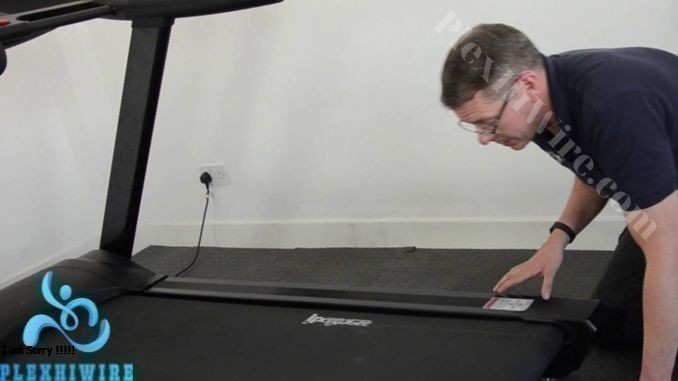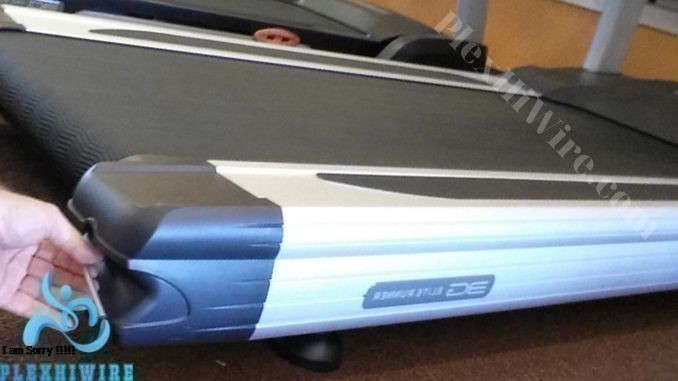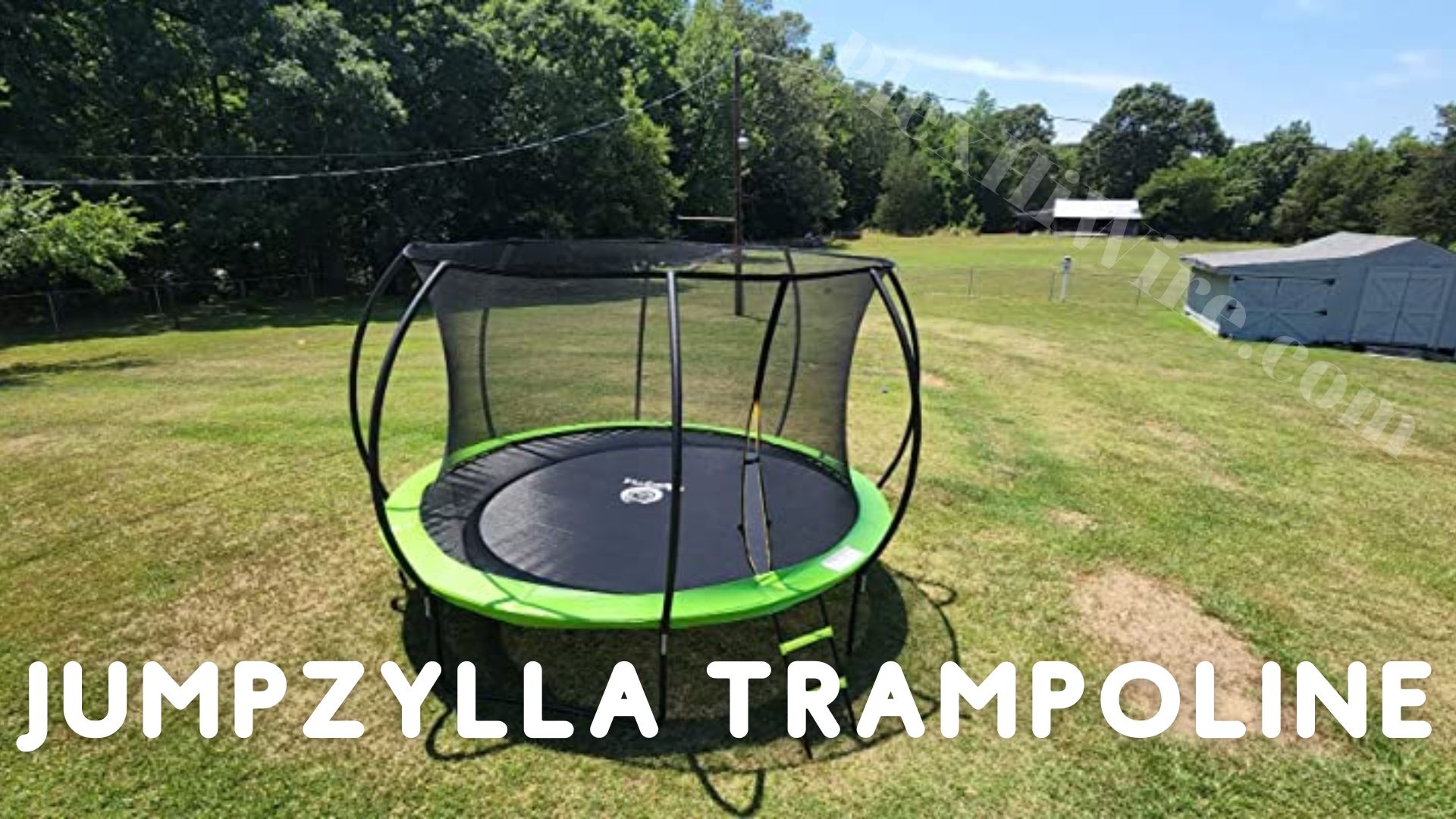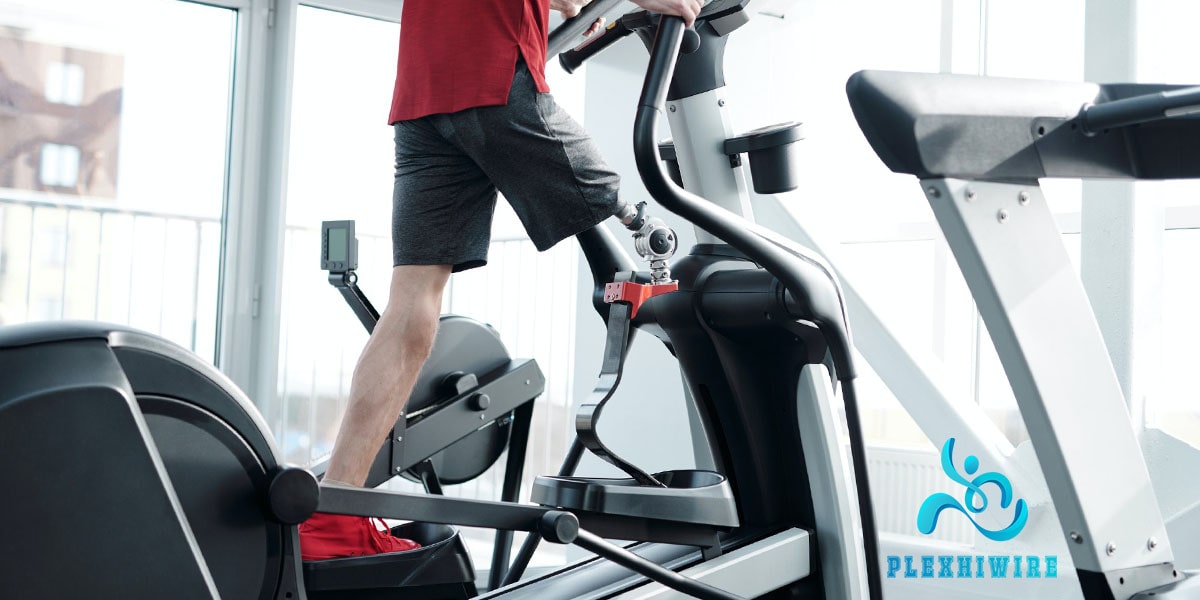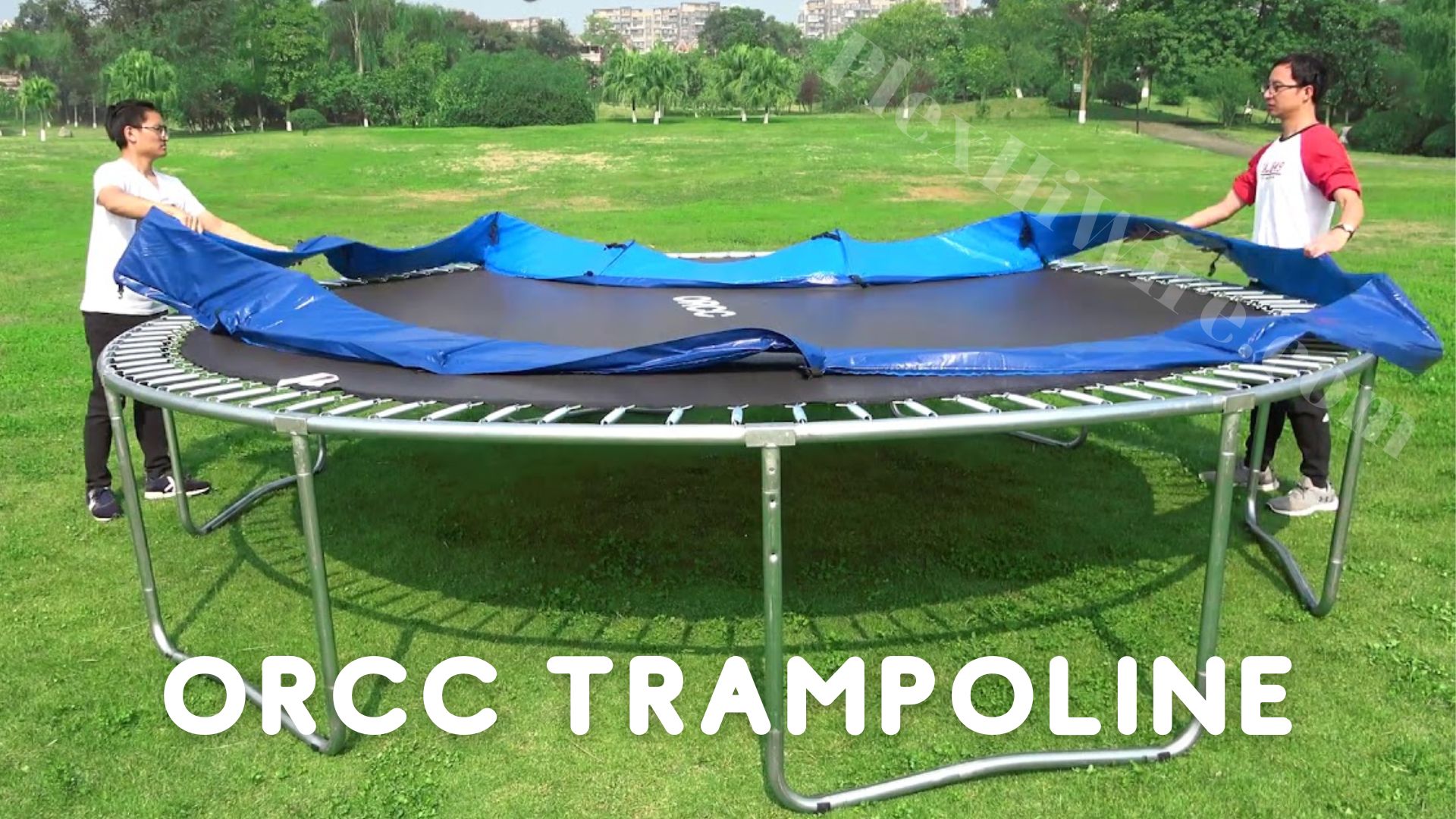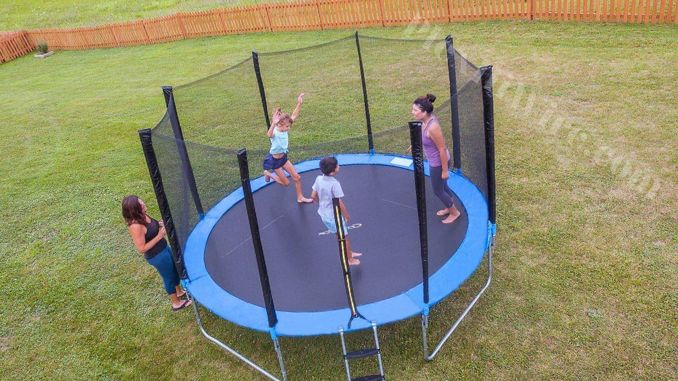How to Tighten Treadmill Belt
A treadmill is a great investment for a healthy lifestyle, but the belt may loosen over time. This can cause the treadmill to run slower or even stop completely. Luckily, you can take some simple steps to tighten the treadmill belt and get your machine running like new again.
When you’re using your treadmill, do you feel like it’s a little unsteady? If you’ve ever used a treadmill, you know that the belt can loosen up over time. Unfortunately, this can be dangerous, as it can lead to the belt coming off the treadmill altogether. In the post “how to tighten treadmill belt”, we’ll walk you through the steps to tighten it up. We will also provide tips on properly caring for your treadmill so that it lasts longer. So if your treadmill belt has been giving you trouble, keep reading for advice on how to make it tight again!
See more: How to Move a Treadmill
- How to Tighten Treadmill Belt
- What is a Treadmill Belt?
- Why is a Treadmill Belt Important?
- How to Guide Adjusting Treadmill Belts
- Why Do Treadmill Belts Slip?
- How to Tell If a Treadmill Belt is Worn Out?
- Treadmill Belt Replacement
- Tips for Maintaining Your Treadmill Belt
- How Do You Test a Treadmill Belt?
- What are the Signs That Your Treadmill Belt Needs Tightening?
- What are the Symptoms of a Loose Treadmill Belt?
- What to Do If the Belt Slips off or Breaks?
- How to Clean the Treadmill Belt
- Preventative Maintenance Tips to Keep Your Treadmill Running Smoothly
- When is It Time to Replace the Treadmill Belt?
- What are the Consequences of Not Tightening the Treadmill Belt?
- Frequently Asked Questions
- Conclusion
What is a Treadmill Belt?
Most modern treadmills have a conveyor belt that helps move the walker or jogger along consistently. The treadmill belt is the part of the treadmill that you run on. The belt is usually made of durable fabric or rubber and is stretched over a series of rollers. The front roller is connected to the motor, which provides power to move the belt. It is a continuous loop that moves around the treadmill deck. The belt is usually made of rubber or PVC and is supported by rollers. As the motor turns, the belt begins to move, and the user walks or runs on the belt as it moves underneath them. The user can control the speed of the belt, and most belts can reach speeds of up to 10 miles per hour. However, over time, the belt can stretch and loosen, which can cause problems when you’re trying to use the treadmill. So, treadmill belts are an essential part of any treadmill and play a vital role in providing a smooth, comfortable walking or running surface.
Why is a Treadmill Belt Important?
Without a doubt, the treadmill belt is one of the most important parts of the treadmill. It is the part of the treadmill that you run on, and it needs to be of good quality in order to provide a smooth and comfortable running experience. A good quality treadmill belt will also last longer and will be less likely to break or wear out over time. There are a few things to look for when choosing a treadmill belt:
- Make sure that the belt is made of a durable material that can withstand heavy use.
- Look for a wide belt to provide a stable running surface.
- Choose a belt that has a good level of traction to prevent slipping.
- Make sure the belt is properly aligned with the deck and rollers.
A treadmill belt should be replaced every few years or sooner if it begins to show signs of wear. A worn or damaged belt can cause the treadmill to malfunction, and it can also be a safety hazard. If you are unsure about how to replace a treadmill belt, please consult your owner’s manual or contact a certified technician for assistance. By following these guidelines, you can be sure to select a high-quality treadmill belt that will provide years of trouble-free use.
How to Guide Adjusting Treadmill Belts
How to Tighten Treadmill Belt
There are a few different ways to tighten a treadmill belt. The first and most common way is to use the tensioning screws that are located on the side of the treadmill deck. These screws can be turned to loosen or tighten the belt. If you’re not sure how to adjust the tensioning screws, consult your treadmill’s owner’s manual.
Another way to tighten a treadmill belt is by adjusting the idler pulley. The idler pulley is a small wheel that helps support the belt. To adjust the idler pulley, you will need to remove the front or back cover of the treadmill deck. Once you have access to the idler pulley, you can turn it to loosen or tighten the belt. Again, if you’re not sure how to adjust the idler pulley, consult your treadmill’s owner’s manual.
Finally, you can also try lubricating the treadmill belt. This can help prevent the belt from slipping and help it run smoothly. You can purchase special treadmill lubricants from most sporting goods stores. Apply a small amount of lubricant to the belt and then run the treadmill for a few minutes to spread it evenly.
How to Loosen a Treadmill Belt
If your treadmill belt has become loose, there are a few things you can do to fix it. First, check the belt’s tension by pressing it down with your hand. If it feels loose, you will need to tighten it. To do this, first, locate the tension knob on the side of the treadmill. It is usually located near the front roller. Once you have found it, turn the knob clockwise to tighten the belt. You may need to experiment with different amounts of tension until you find what works best for you.
Another way to tighten a loose treadmill belt is by adjusting the front and rear rollers. The front roller is located at the front of the treadmill beneath the deck, while the rear roller is located at the back of the treadmill beneath the motor cover. To adjust the front roller, unscrew the bolts that hold it in place and move it closer to the deck. To adjust the rear roller, unscrew the bolts that hold it in place and move it closer to the motor cover. Once you have adjusted both rollers, tighten the bolts and check the tension of the belt again.
If your treadmill belt is still too loose after trying these methods, you may need to replace it. Treadmill belts can be purchased online or at a local sporting goods store. When purchasing a new belt, be sure to measure your treadmill deck to ensure you get the correct size. Once you have a new belt, follow the instructions above to install it.
Following these steps can fix a loose treadmill belt and keep your machine running smoothly. Remember to check the tension of the belt regularly and adjust it as needed to prevent problems in the future. With proper care, your treadmill will provide years of trouble-free use.
How to Align a Treadmill
If your treadmill belt has been slipping or seems to be off-center, the treadmill likely needs to be aligned. This fairly easy process can be done at home with a few tools:
- Turn off the power to the treadmill and unplug it from the wall outlet.
- Locate the adjustment screws on the front of the treadmill deck. These are usually located near the front roller.
- Use a wrench or Allen key to loosen the screws until they are able to move freely.
Now, slowly walk on the treadmill belt while holding onto the handrails. As you walk, observe the belt’s position in relation to the deck. The belt should be centered between the two rollers and not touch the deck’s sides. If the belt is off-center, use the adjustment screws to move the deck until the belt is centered. Once the belt is centered, tighten the adjustment screws and plug the treadmill back in. Next, turn on the power and test the treadmill at a slow speed to make sure it is working properly.
By following these simple steps, you can keep your treadmill running smoothly for years to come! In addition, regular maintenance, like aligning the belt and wiping down the deck, will help extend your machine’s life. And if you ever have any issues, be sure to consult your treadmill’s owner’s manual for troubleshooting tips.
Why Do Treadmill Belts Slip?
There are a few reasons why your treadmill belt may start to slip. The first is that the belt itself may be worn out. The belt may have seen better days if you’ve had your treadmill for a while. It may be time to replace it entirely.
Another reason why your treadmill belt may slip is that the deck (the part of the treadmill where the belt runs) may be warped. This can happen over time, especially if you use your treadmill frequently. If the deck is warped, it will cause the belt to slip more easily.
Finally, another reason why your treadmill belt may slip is that the pulleys (the parts of the treadmill that help keep the belt in place) may be loose. This can happen if the treadmill is old or if you use it frequently. If the pulleys are loose, they will need to be tightened.
How to Tell If a Treadmill Belt is Worn Out?
One way to tell if a treadmill belt is worn out is by the noise it makes. If the belt is starting to make a squeaking noise, it may be time to replace it. Another way to tell if the belt is worn out is by the appearance of the tread. If the tread looks shiny or bald in spots, it’s time for a new belt.
If you’re not sure if your treadmill belt is worn out, consult the owner’s manual. Most manuals will have a section on how to tell if the treadmill belt needs to be replaced.
Generally, replacing your treadmill belt every six months to one year is a good idea. By replacing the belt regularly, you can extend the life of your treadmill and ensure that it runs smoothly.
Treadmill Belt Replacement
If you’ve determined that your treadmill belt needs to be replaced, don’t worry – it’s a relatively easy process. Most belts can be replaced in just a few minutes with no special tools required.
Before you replace the belt, make sure to unplug the treadmill from the power source. Then, remove the old belt by loosening the front roller bolts and sliding the belt off of the pulleys.
To install the new belt:
- Start by threading it around the rear roller.
- Stretch the belt over the front roller and thread it through the deck before tightening the front roller bolts.
- Once the new belt is in place, plug in the treadmill and test it out.
If the belt is still too loose, repeat the process until it’s tight enough. When the belt is properly tensioned, it should be able to support your weight without slipping.
See more: How to Run on a Treadmill – Is It Easy to Do It?
Tips for Maintaining Your Treadmill Belt
In addition to replacing your treadmill belt on a regular basis, there are a few other things you can do to keep it in good condition.
First, make sure to clean the belt regularly with a soft cloth and treadmill-safe cleaner. This will help remove any dirt and debris that could build up over time and cause the belt to degrade.
Second, avoid using your treadmill in extreme hot and cold temperatures. Extreme temperatures can damage the belt and cause it to break down prematurely.
Finally, make sure to keep the treadmill deck clean and free of debris. A build-up of dirt and dust on the deck can act like sandpaper and wear down the belt over time.
By following these simple tips, you can help extend the life of your treadmill belt and keep your machine running smoothly for years to come.
How Do You Test a Treadmill Belt?
To ensure that a treadmill belt is in good working condition, it is important to test it regularly. A few basic tests can be performed to check the belt’s alignment, tension, and tracking. First, align the belt by loosening the rear roller screws and moving the roller until the belt is centered on the deck. Next, check the tension by placing your hand on the belt and pressing it down firmly. The belt should have some give but should not sag more than an inch or two. Finally, check the tracking by running on the treadmill for a few minutes and observing the path of the belt. If the belt seems to be drifting off-center, adjust the front roller screws until it is properly aligned. By following these simple steps, you can ensure that your treadmill belt is in good working condition.
What are the Signs That Your Treadmill Belt Needs Tightening?
One of the most obvious signs that your treadmill belt needs tightening is if the treadmill seems to be running slower than usual. For example, if you’ve been running at the same speed for a while and suddenly your treadmill slows down, it’s likely that the belt has become loose and needs to be tightened. Another sign that your belt may be too loose is if the treadmill feels unstable when you’re using it. This can be dangerous as it increases the risk of the belt coming off completely. If you notice either of these signs, it’s time to take action and tighten your treadmill belt.
If you’re not sure how to tighten a treadmill belt, don’t worry! It’s a relatively simple process that anyone can do. First, locate the area on the treadmill where the belt meets the deck. There will be a pulley or roller in this area. Once you’ve found it, use your hand to apply pressure to the side of the belt that is furthest from the deck. This will help to loosen the belt so that you can make any necessary adjustments. Next, use a wrench or another type of tool to tighten the bolts that hold the belt in place. Be sure not to overtighten the bolts, as this can damage the treadmill. Finally, test out the treadmill by walking or running on it for a few minutes to make sure that the belt is tight enough.
It’s important to check your treadmill regularly and tighten the belt if necessary. This simple maintenance task can help prolong your treadmill’s life and keep it running smoothly.
What are the Symptoms of a Loose Treadmill Belt?
One of the most common problems with treadmills is a loose belt. If your treadmill belt is loose, you may notice a decrease in performance and an increase in noise. The belt may also slip when you walk or run on it. If the belt is not properly tensioned, it can slip during use, causing the machine to slow down or stop altogether. In addition, a loose belt can also cause the machine to make loud noises or vibrate excessively. If you suspect that your treadmill belt is loose, there are a few symptoms to look for:
- Check to see if the belt is centered on the deck. If it has shifted to one side, it may be causing the machine to run unevenly.
- Inspect the belt for any signs of wear or damage. If the belt is worn or frayed, it will need to be replaced.
- Try running on the treadmill at a slow speed.
If the belt slips or makes noise, it needs to be tightened. This can be dangerous, so it is important to check the tightness of your belt regularly. If you notice any of these symptoms, tighten the belt according to your owner’s manual instructions. By following these simple steps, you can keep your treadmill running smoothly and prevent serious damage to the machine.
What to Do If the Belt Slips off or Breaks?
If the belt on your treadmill slips off, don’t panic! This is a relatively common problem that can be easily fixed. First, try tightening the bolts that hold the belt in place. If this doesn’t work, you may need to replace the belt altogether. You can purchase a new belt from most sporting goods stores or online retailers. Be sure to measure your treadmill before purchasing a new belt, as belts come in different sizes. Once you have a new belt, follow the steps above to install it correctly.
If your treadmill belt breaks, you’ll need to purchase a new one and install it following the steps above. In some cases, replacing other parts of the treadmill, such as the deck or motor, may be necessary. If you’re not sure how to do this, it’s best to consult a professional.
A loose or broken treadmill belt can be frustrating, but it’s relatively easy to fix. Be sure to check your treadmill regularly and tighten the belt if necessary. If the belt slips off or breaks, you can purchase a new one from most sporting goods stores or online retailers. With a little bit of care and maintenance, your treadmill will last for years to come!
How to Clean the Treadmill Belt
If your treadmill belt is starting to look a little dirty, it’s important to clean it on a regular basis. A dirty belt can cause the treadmill to run slower and can be a safety hazard. Here are some tips on how to clean your treadmill belt:
- Use a soft cloth or brush to remove any dirt or debris from the belt.
- If the belt is very dirty, you can use a mild soap and water solution to clean it. Be sure to rinse the soap off completely before using the treadmill again.
- Never use harsh chemicals or cleaners on the treadmill belt as this can damage it.
Caring for your treadmill
In order to keep your treadmill in good working condition, it’s important to take care of it. Here are some tips on how to properly care for your treadmill:
- Always wipe down the treadmill after use to remove any dirt or sweat.
- Inspect the treadmill belt regularly to make sure it’s not loose or damaged.
- If you notice any damage to the treadmill, contact a professional for repairs.
Following these simple steps will help you keep your treadmill in good working condition and prevent the belt from becoming loose.
Preventative Maintenance Tips to Keep Your Treadmill Running Smoothly
Preventative maintenance is the key to keeping your treadmill running smoothly for years to come. Here are a few tips to help you get started:
First, make sure to keep the belt and deck clean. A build-up of dirt and dust can cause the belt to slip and damage the motor. Use a soft cloth or brush to remove debris after each use, and wipe down the deck at least once a week.
Second, keep an eye on the rollers. The rollers help to keep the belt moving smoothly, and if they become worn or damaged, it can cause the belt to slip or the motor to overheat. So inspect the rollers regularly for wear, and replace them if necessary.
Third, don’t forget about the motor. The motor is the heart of your treadmill; if it isn’t running properly, it won’t run properly either. Make sure to clean the motor area on a regular basis, and pay attention to any strange noises or smells coming from the motor area. Contact a qualified technician for service if you notice anything out of the ordinary.
Following these simple tips can help prevent major problems with your treadmill and keep it running smoothly for years to come.
When is It Time to Replace the Treadmill Belt?
Eventually, the treadmill belt will need to be replaced no matter how well you take care of it. A few signs indicate it’s time for a new belt. If the belt is fraying or showing signs of wear, stretched out or loose, or slips when you’re using the treadmill, it’s time to replace it. You can purchase a new belt from most sporting goods stores or online retailers. Be sure to measure your treadmill before purchasing a new belt, as belts come in different sizes. Once you have a new belt, follow the steps above to install it correctly.
A loose or broken treadmill belt can be frustrating, but it’s relatively easy to fix. Be sure to check your treadmill regularly and tighten the belt if necessary. If the belt slips off or breaks, you can purchase a new one from most sporting goods stores or online retailers. With a little bit of care and maintenance, your treadmill will last for years to come!
How Do You Stop a Belt from Slipping?
The first step is to identify the problem. For example, if the belt is slipping, it could be because it’s loose or because the treadmill deck is cluttered. If the belt is loose, you’ll need to tighten it. If the treadmill deck is cluttered, you’ll need to clean it up.
Once you’ve identified the problem, follow these steps to fix it:
First, tighten the belt: If the belt is loose, use a wrench or pliers to tighten the bolts that hold the belt in place.
Clean the treadmill deck: If the treadmill deck is cluttered, use a damp cloth to wipe away any dirt or debris.
Adjust the tension: If the belt is still slipping, you may need to adjust the tension. To do this, consult your treadmill’s instruction manual.
Following these steps should help to fix the problem and prevent the belt from slipping in the future. If you have any further questions or concerns, please feel free to contact us.
What are the Consequences of Not Tightening the Treadmill Belt?
One of the most important aspects of using a treadmill is making sure the belt is tight enough. If the belt is too loose, it can slip and cause you to fall. Additionally, a loose belt can cause the motor to overheat and malfunction. Furthermore, if the belt is not properly aligned, it can cause the machine to vibrate excessively, which can be both annoying and dangerous. Finally, a loose belt will cause your treadmill to be less effective as a workout tool, as it will require you to use more energy to maintain your speed and pace. For all these reasons, it is crucial that you take the time to ensure that your treadmill belt is snug and correctly positioned before beginning your workout. Failure to do so could result in serious injury or damage to your equipment.
Frequently Asked Questions
What are Some Signs That My Treadmill Belt is Getting Loose?
If you notice that your treadmill is running slower than usual or that the belt is slipping, this is a sign that the belt may be getting loose. Another sign is if the treadmill makes noise when you use it. This can be a sign that the bearings or other parts of the treadmill are starting to wear out.
How Do I Tighten My Treadmill Belt?
There are a few ways to do this, but the most common method is to use a hex key or Allen wrench. You will need to find the adjustment screws on the side of the treadmill deck and then turn them clockwise to tighten the belt. You may need to experiment a bit to find the perfect tension, but as a general rule, you should be able to turn the screws about 1/4 to 1/2 turn at a time.
How Often Should I Tighten My Treadmill Belt?
It is generally recommended that you tighten your treadmill belt every six months or so. However, this can vary depending on how often you use your treadmill and how well you maintain it.
What Else Can I Do to Extend the Life of My Treadmill?
In addition to tightening the belt, you can do a few other things to keep your treadmill in good condition. Make sure to vacuum under the deck and clean off the rollers regularly. You should also oil the deck and rollers every few months. Following these simple maintenance tips will help your treadmill last longer.
My Treadmill Belt is Still Slipping. What Should I Do?
If you have tried tightening the belt and it is still slipping, there may be an issue with the alignment of the belt. You can try to adjust the position of the belt on the deck by loosening the front roller bolts and moving the roller forward or backward. Alternatively, you can take your treadmill to a repair shop to have them take a look at it.
Conclusion
If your treadmill belt is loose, it can cause the machine to wobble and vibrate, which can lead to an uncomfortable workout experience. Fortunately, tightening the belt is a quick and easy process that only takes a few minutes. The bottom line is that if your treadmill belt feels loose, you can do a few things to tighten it. We’ve outlined the steps you need to take and given some tips on how to prevent the belt from loosening in the future. Follow these instructions, and your belt should be nice and tight in no time!
We hope that this information in the post “How to Tighten Treadmill Belt” has been helpful and that you are now able to properly tighten your treadmill belt. Have you tried tightening the belt using one of these methods? Have you had any trouble tightening your treadmill belt? What methods have you tried? Let us know in the comments below!
